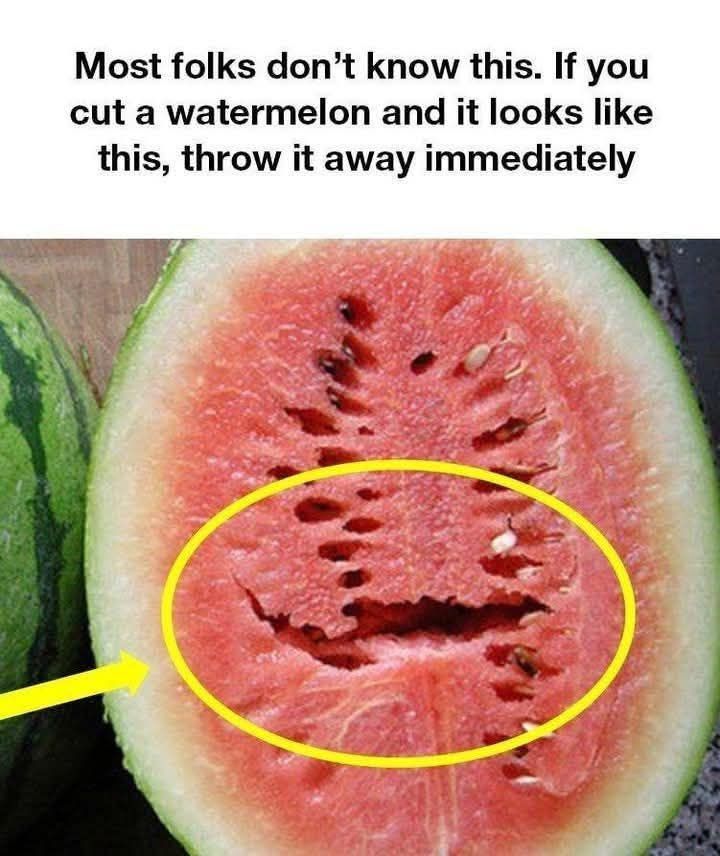Introduction
Ever sliced into a seemingly perfect watermelon, only to be greeted by something…unexpected? A strange texture, a discoloration, or even a hollow center can turn a summer treat into a cause for concern. But when should you actually toss that watermelon? Knowing the signs that indicate a potentially unsafe or spoiled watermelon can save you from a stomach ache – or worse. Let’s dive into what to look for inside your watermelon and when it’s time to say goodbye.
[
Main Body
Hollow Heart: Is It Always Bad?
One common sight that can cause alarm is “hollow heart,” a large crack or gap in the center of the watermelon. While it might look off-putting, hollow heart isn’t necessarily a sign of spoilage. It’s usually caused by inconsistent pollination or environmental stress during the watermelon’s growth.
Generally, a watermelon with hollow heart is still safe to eat, but the texture around the hollow area might be less firm or slightly mealy. Taste a small piece; if it tastes normal and smells fresh, it’s likely fine to enjoy. However, if it also exhibits other concerning signs (which we’ll discuss below), err on the side of caution.
[
Discoloration: White, Yellow, or Black Streaks
The vibrant red or pink flesh of a watermelon is part of its appeal. So, what does it mean if you spot unusual colors?
- White Streaks: These are often harmless and result from uneven ripening or variety differences. They usually don’t affect the taste.
- Yellow Patches: A yellow or pale-colored patch on the side where the watermelon rested on the ground (the “ground spot”) is perfectly normal. However, significant yellowing *inside* the flesh can indicate overripeness or, in some cases, spoilage.
- Black Streaks or Spots: These are more concerning. Small, isolated black spots might just be bruises, but widespread black streaks or mold-like spots indicate rot and the watermelon should definitely be discarded.
[
Unusual Smell or Taste
Your senses are your best detectors! A ripe, healthy watermelon has a fresh, subtly sweet scent. A sour, fermented, or generally “off” smell is a major red flag. Even if the watermelon looks relatively normal, trust your nose. Similarly, if the taste is sour, bitter, or otherwise unpleasant, don’t risk eating it.
[
Slimy or Grainy Texture
The texture of a good watermelon is firm and crisp. Here’s what to look out for:
- Slimy Texture: This is a clear sign of bacterial growth and spoilage. Discard the watermelon immediately.
- Grainy or Mealy Texture: While not necessarily dangerous, this texture indicates the watermelon is overripe. It might not taste great, but it’s usually still safe to eat unless accompanied by other warning signs.
[
Cracked or Leaking Rind
While internal issues are crucial, the exterior of the watermelon can also offer clues. A cracked rind, especially if accompanied by leaking juice, can be an entry point for bacteria and mold. This can lead to internal spoilage, even if the flesh initially looks okay. It’s best to avoid watermelons with significant cracks or leaks.
[
Conclusion
While a perfectly ripe watermelon is a summer delight, knowing when to throw one away is essential for food safety. Look out for discoloration (especially black streaks), unusual smells or tastes, slimy textures, and cracked rinds. If you see any of these signs, it’s best to err on the side of caution and discard the watermelon. Enjoying a safe and delicious watermelon is always the goal!
[
